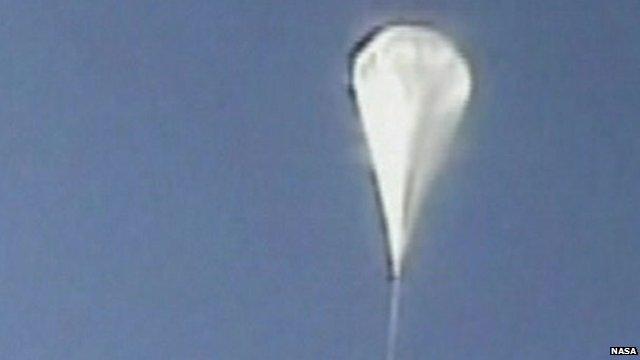Nasa ends year-long Mars simulation on Hawaii
- Published
Life on Mars: Moment Nasa crew emerges from year-long trial
A team of six people has completed a Mars simulation in Hawaii, where they lived in near isolation for a year.
Since 29 August 2015, the group lived in close quarters in a dome, without fresh air, fresh food or privacy.
Experts estimate that a human mission to the Red Planet could take between one and three years.
The Nasa-funded study run by the University of Hawaii is the longest of its kind since a Russian mission that lasted 520 days.
Having survived their year in isolation, the crew members said they were confident a mission to Mars could succeed.
"I can give you my personal impression which is that a mission to Mars in the close future is realistic," Cyprien Verseux, a crew member from France, told journalists. "I think the technological and psychological obstacles can be overcome."
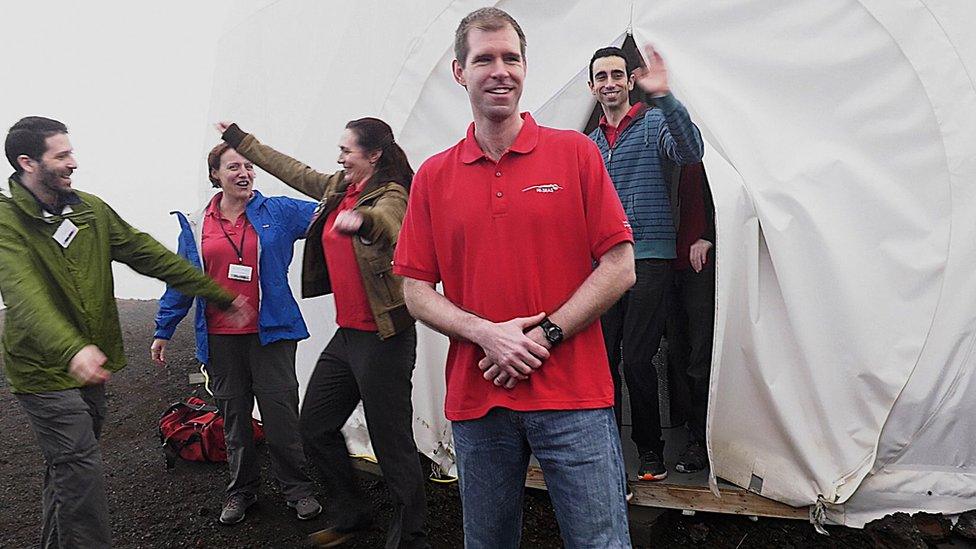
The crew received a warm welcome as they walked out of their dome after a year in isolation
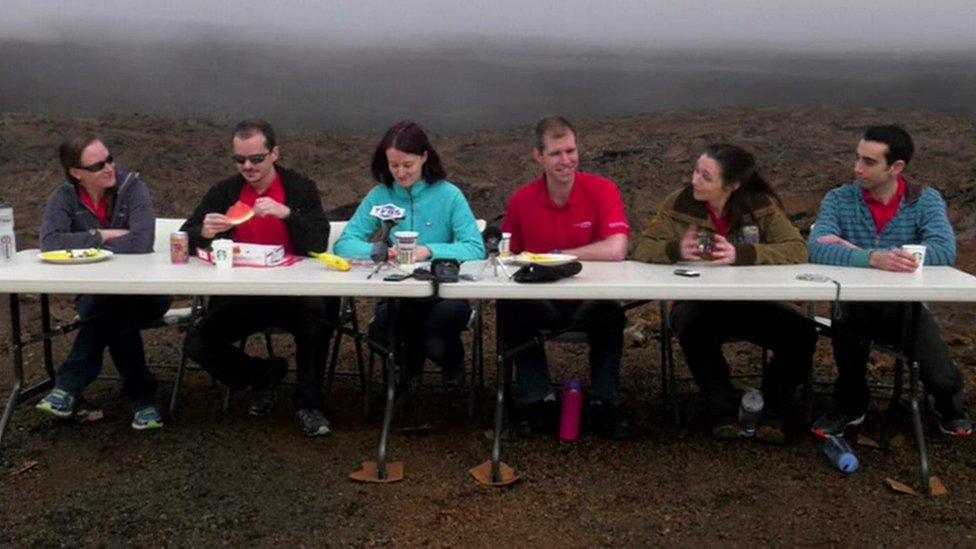
They did not lose any time eating some of the foods they had missed in their year of isolation: pizza and bananas
But mission commander Carmel Johnston said the lack of privacy over the past year had been difficult.
"It is kind of like having roommates that just are always there and you can never escape them so I'm sure some people can imagine what that is like and if you can't then just imagine never being able to get away from anybody," she said.
Tristan Bassingthwaighte, a doctor of architecture at the University of Hawaii, praised research done into the human element of space travel.
"The research going on up here is just super vital when it comes to picking crews, figuring out how people are going to actually work on different kinds of missions, and sort of the human factors element of space travel, colonisation, whatever it is you are actually looking at," he said.
The team consisted of a French astro-biologist, a German physicist and four Americans - a pilot, an architect, a journalist and a soil scientist.
The experiment dealt with the human element of exploration.
Whilst conducting research, the six had to live with limited resources, wear a space-suit when outside the dome, and work to avoid personal conflicts.
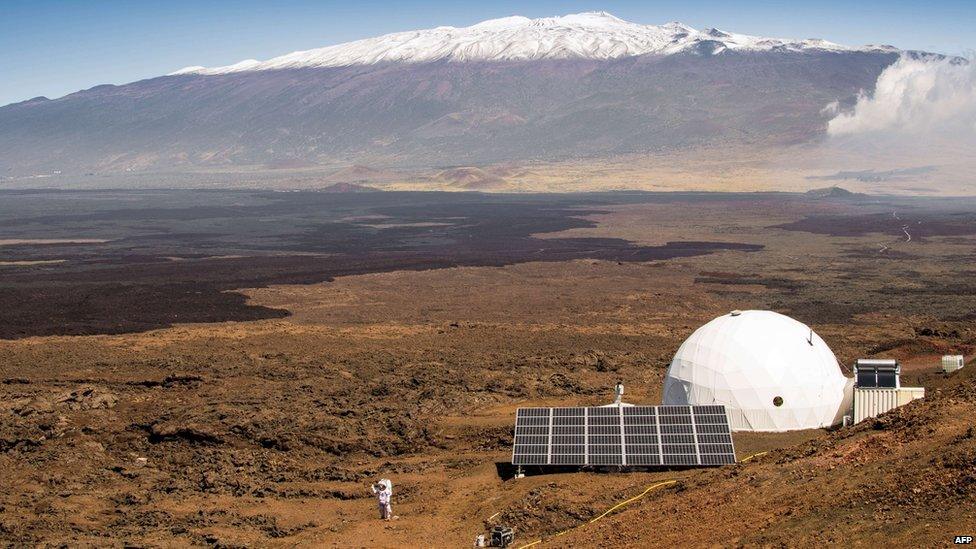
The isolation experiments addressed the human element of exploration
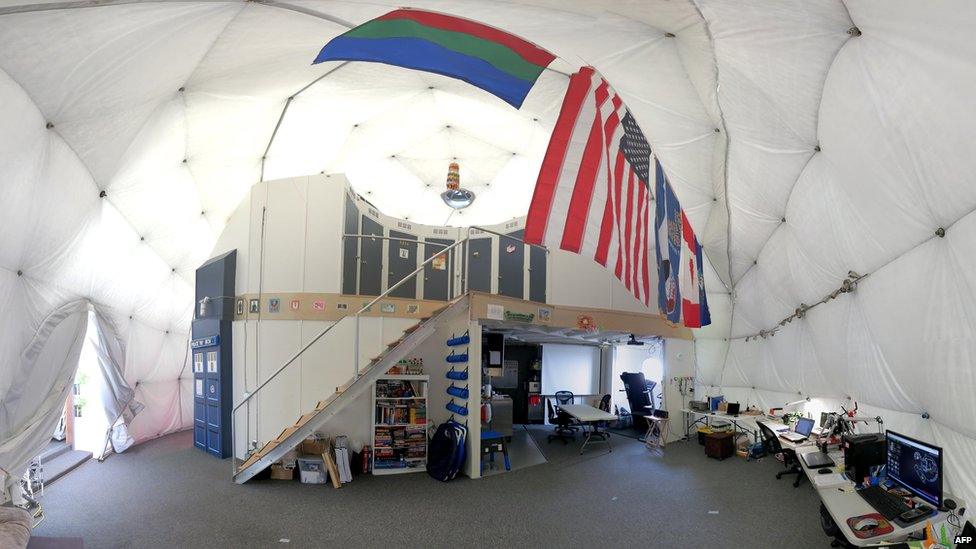
The team members had almost no privacy during the mission
They each had a small sleeping cot and a desk inside their rooms. Provisions included powdered cheese and canned tuna.
Missions to the International Space Station normally only last six months.
The Mars500 project locked six men in steel tubes for 18 months
- Published13 April 2015
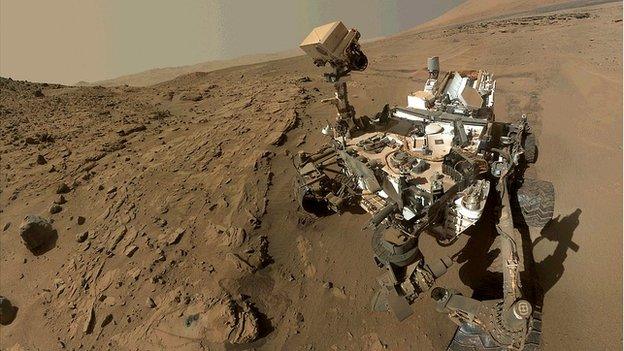
- Published21 August 2015
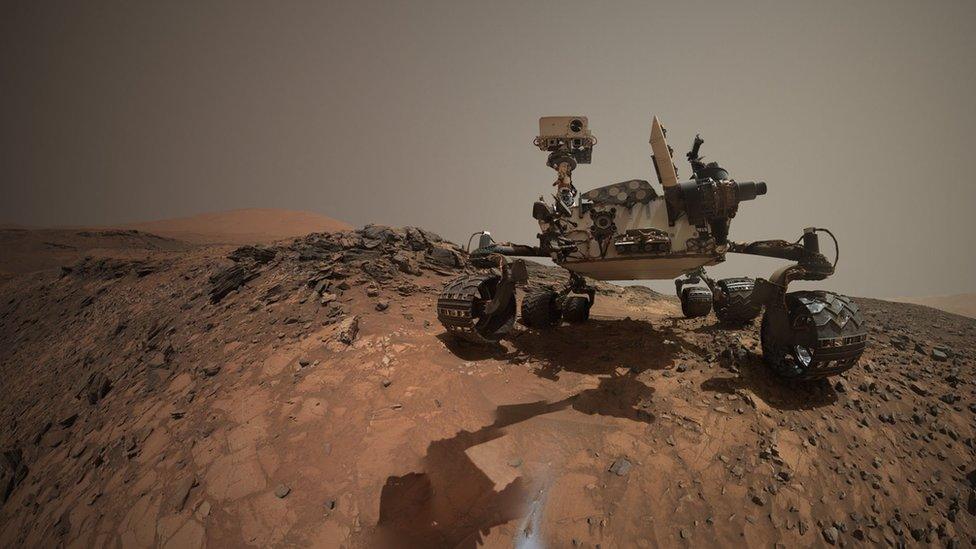
- Published8 June 2015
